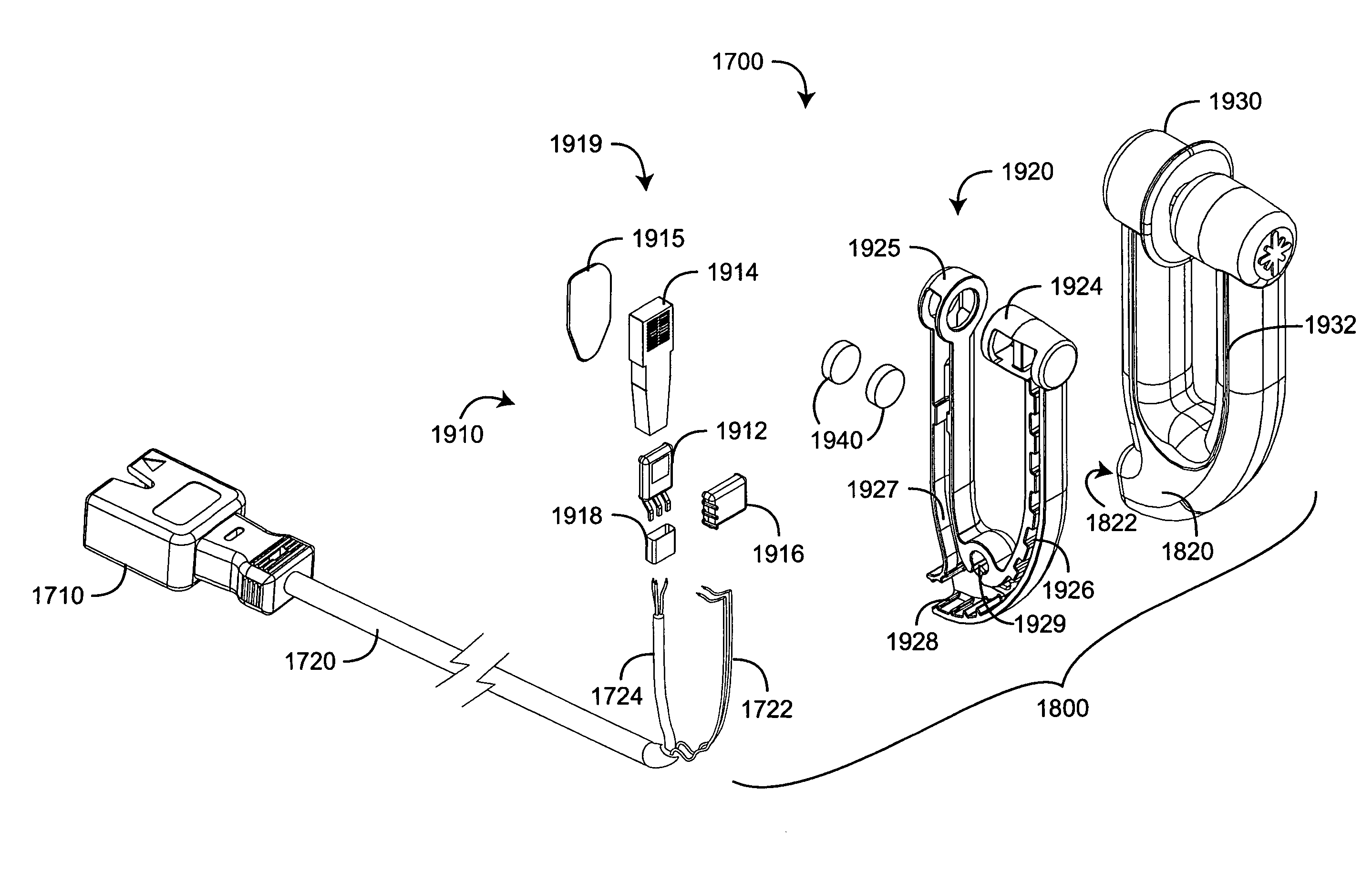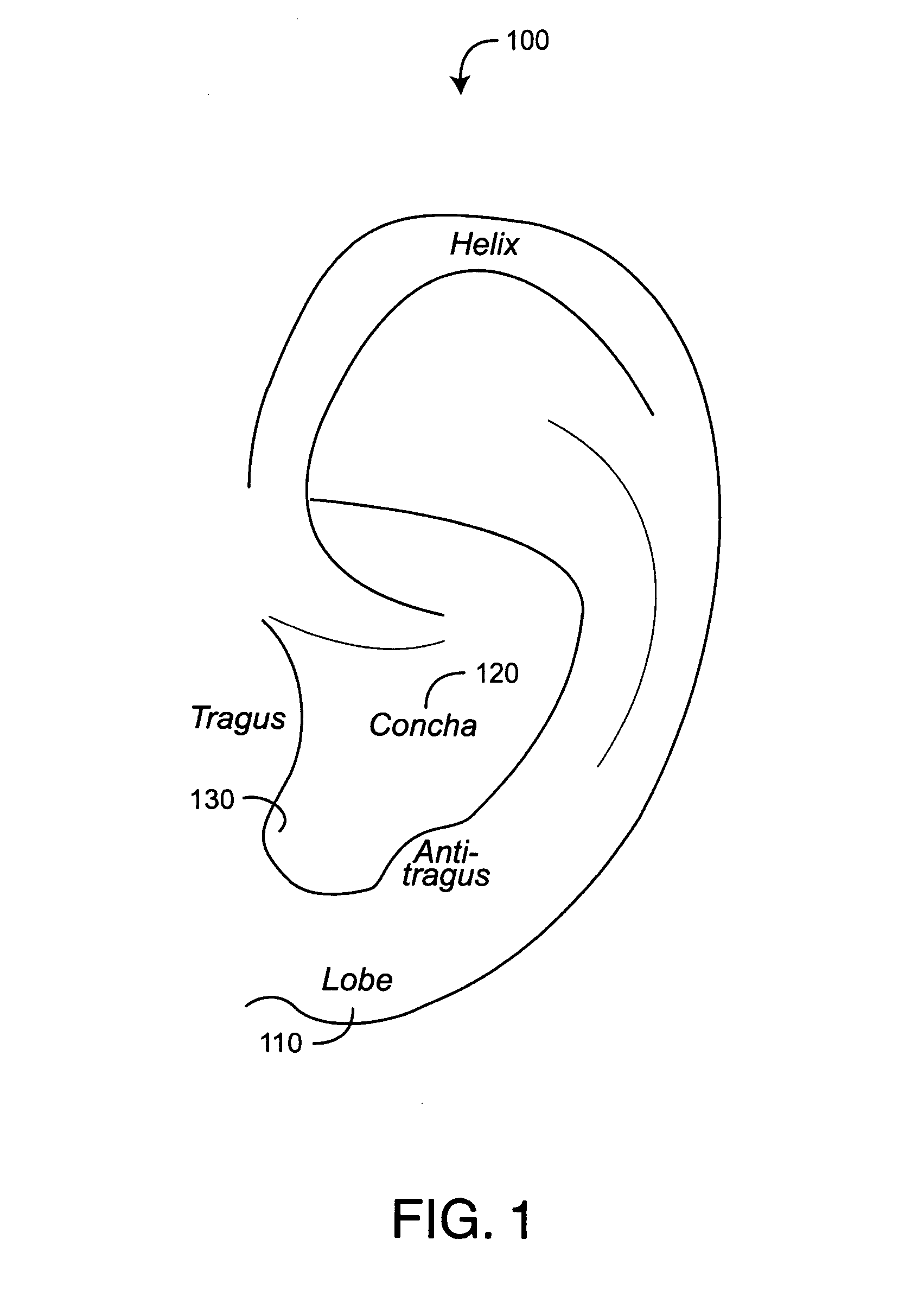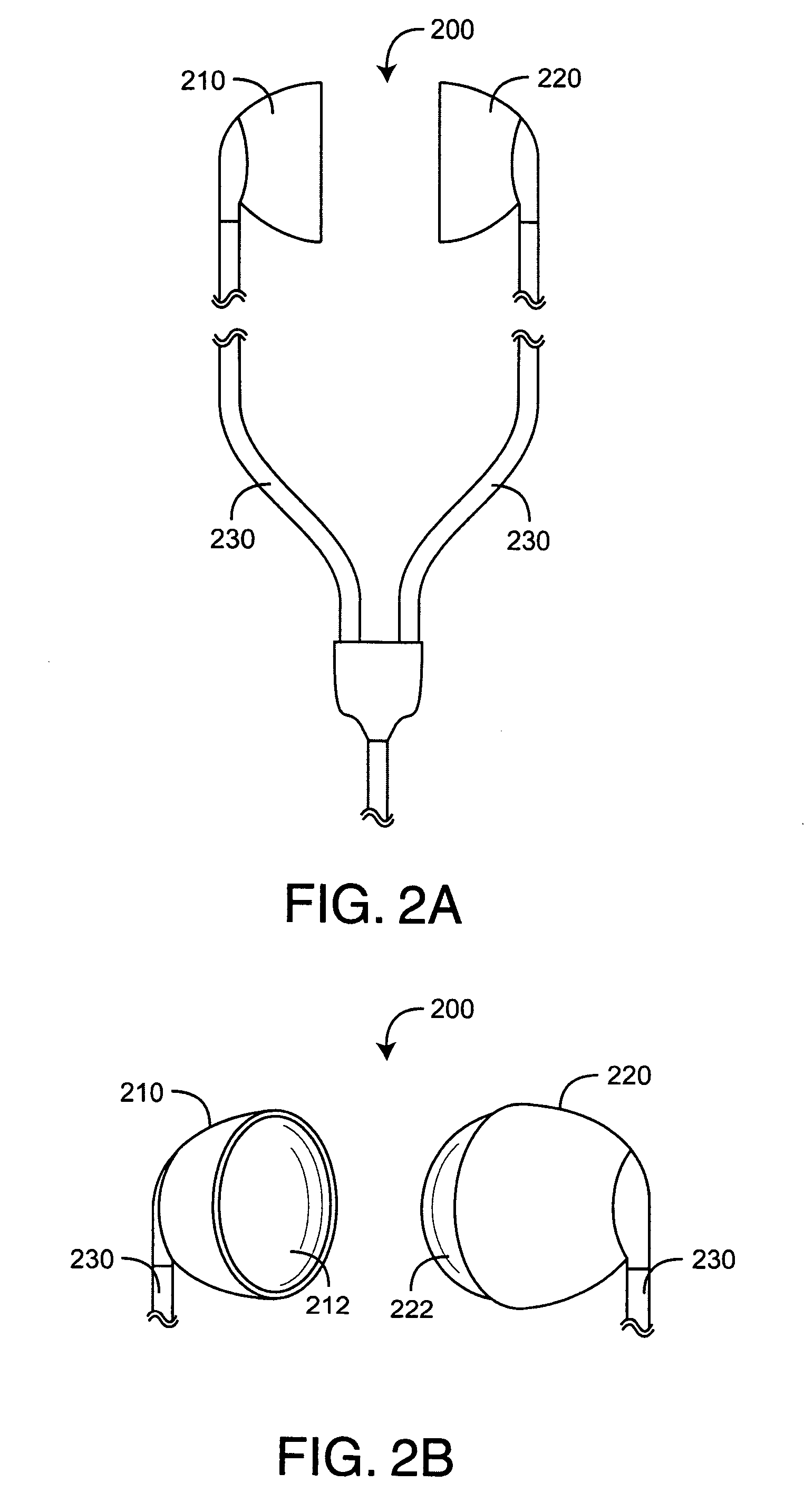Ear sensor
a technology of ear sensor and ear chamber, which is applied in the field of ear sensor, can solve the problem of less suitable site for central oxygen saturation measurement, and achieve the effect of quick and more accurate reflection of oxygenation changes
- Summary
- Abstract
- Description
- Claims
- Application Information
AI Technical Summary
Benefits of technology
Problems solved by technology
Method used
Image
Examples
Embodiment Construction
[0046]FIGS. 2A-B illustrate an ear bud embodiment of an ear sensor 200 having an emitter ear bud 210, a detector ear bud 220 and connecting cables 230. The emitter ear bud 210 has a generally concave surface for attachment to the back of an ear. The detector ear bud 220 has a generally convex surface 222 for attachment inside the ear at a concha site opposite the emitter ear bud 210. Sensor cables 230 are attached at the back of each ear bud having wires for electrical communications with a physiological monitor, such as a pulse oximeter. In particular, the emitter ear bud 210 includes wires for receiving emitter drive current from a monitor and the detector ear bud 220 includes wires for transmitting photodiode current to the monitor.
[0047]FIGS. 3A-B illustrate a flexible ear pad embodiment of an ear sensor 300 having an emitter pad 310, a detector pad 320 and corresponding cables 330. The sensor pads 310, 320 advantageously include a housing for each of the emitter pad 310 and the...
PUM
 Login to View More
Login to View More Abstract
Description
Claims
Application Information
 Login to View More
Login to View More - R&D
- Intellectual Property
- Life Sciences
- Materials
- Tech Scout
- Unparalleled Data Quality
- Higher Quality Content
- 60% Fewer Hallucinations
Browse by: Latest US Patents, China's latest patents, Technical Efficacy Thesaurus, Application Domain, Technology Topic, Popular Technical Reports.
© 2025 PatSnap. All rights reserved.Legal|Privacy policy|Modern Slavery Act Transparency Statement|Sitemap|About US| Contact US: help@patsnap.com



